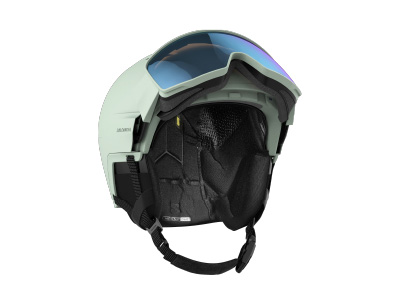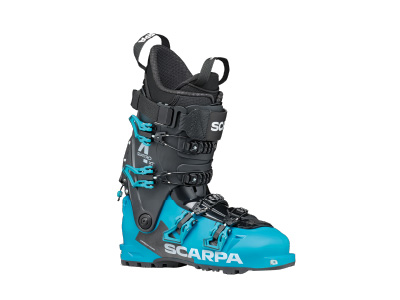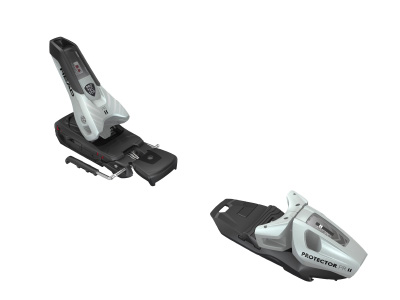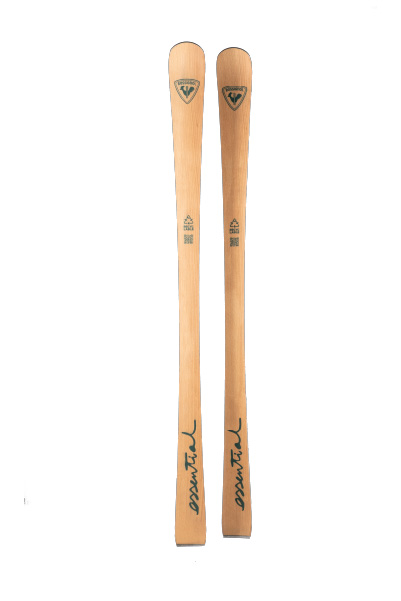PART 4: THE COOL GEAR

SALOMON DRIVER PRIME SIGMA PHOTO MIPS
$500; salomon.com
The long name speaks to all the technology stuffed into this goggle and helmet combo. The Driver is a more subtle take on the visor helmet that also combines multiple levels of protection, comfort and clarity. It doesn’t come cheap, but after putting it on it’s hard to go back.
The theory behind integrating goggles and helmets is sound—less futzing and a better fit between the two—but in practice it’s hard to achieve a seal between the bottom of the goggle and the face. Salomon gets around this by hooking the goggle lens into a track that applies inward pressure to customize the foam shape and seal gaps.
The lens combines photochromic tinting with Salomon’s Sigma technology. The first automatically lightens and darkens the tint to the amount of available light, so even though these are interchangeable we didn’t need to swap out the lenses according to weather conditions. Sigma boosts red and blue light and reduces green wavelengths to increase contrast in a white world.
Safety comes from two systems. For rotational forces there’s a MIPS sleeve that allows the rigid exterior to move separately from the interior padding. Salomon’s proprietary EPS 4D is an impact-cushioning system made up of independent pads that deform to absorb force from any direction up to 30 percent more effectively than the ski helmet standard.
Fit is dialled in via a BOA wheel that adjusts a head-shaped oval ring, rather than a more typical circular ring. A merino wool liner is toasty warm, soft and pulls sweat away from the skin.

SCARPA 4-QUATTRO
From $899; scarpa.com
Scarpa dominates the backcountry ski boot market. For the first time in a decade, the Italian brand is setting its sights on resorts with a new boot focused on in-bounds terrain. The touring-ready but resort-capable 4-Quattro is one of the lightest hybrid ski boots available, weighing 3kg per pair. After testing it we found it to be a versatile resort boot and one of the best contenders for being the one boot that does it all.
Alpine Axial Hybrid construction combines a traditional tongue and overlap design for easy entry and exit, with a carbon insert that wraps under the foot, increasing torsional rigidity and energy transmission.
4-Quattro boots are available in four models. The XT comes in a 130 flex and a women’s specific 115 flex, both made from Grilamid plastic. The SL comes in a unisex 120 flex and a women’s 110 flex, both made from Pebax R-new plastic. Both Grilamid and Pebax are bioplastics derived from castor beans.
A walk mode, a rubberized GripWalk sole and insertion points for tech-style touring bindings give the 4-Quattro plenty of mobility. We especially like that the 61-degree range of motion is available without undoing any buckles and the stand height is low, putting the skier closer to the ski for better energy transmission.
All four boots come in a 100mm last with a low-volume fit that sucks the heel deep into the pocket. An Intuition heat-mouldable liner and four easy-to-use loop buckles help customize the fit.

TYROLIA PROTECTOR BINDING
From $349; tyrolia.com
Modern ski bindings have a weakness. They do a great job of releasing to prevent injuries most of the time, except during backward twisting falls. The heel piece doesn’t like to release in the lateral direction because the force applied is similar to other, normal skiing actions. This blind spot is often the cause of ACL tears and is why the knee is the most common major ski injury.
The heel piece on the Protector looks beefier and thicker than other bindings. Tyrolia says it maintains the same height and ramp angle as the brand’s other higher performance bindings, though it weighs five to 10 percent more. Overall, it feels the same as any other binding and it’s compatible with GripWalk soles.
The typical blind spot exists in the heel piece in the lateral (or horizontal) direction, within a 15-degree window in either direction. The solution is a third DIN setting that controls when the binding will release in this range. Tyrolia’s new Protector Binding isn’t the first to do so—that honour belongs to Knee Binding. But it’s the first widely available binding.
The release range of the heel piece now increases from a standard 150 degrees to 180. Releasing in a complete arc reduces forces on the tibia and ACL by more than 50 percent, according to independent tests.
The Protector series includes five models, three from Tyrolia and two from sister brand Head, with DIN settings up to 13.

ROSSIGNOL ESSENTIAL
$1,100; rossignol.com
There are four silos for reducing the carbon footprint of a ski: parts, production, delivery and disposal. Rossignol hopes to reduce them all, and to test the process it created the Essential. The carving ski (123-80-104 sidecut) is available in limited quantities and three lengths.
To make end-of-life disposal easier Rossignol focused on using fewer and more sustainable materials. About 62 percent of the ski’s materials come from recycled, natural and bio sources and 75 percent of the ski is potentially recyclable, compared to 10 percent in most skis.Of the 25 percent un-recyclable content, 17 percent can be burned to produce energy, leaving just six percent as waste.
Part of creating product circularity is setting up easy collection. Rossignol is working with retailers to develop the network across Canada. Simultaneously, it is partnering with Europe-based MTB to invest in the recycling process. Together they are developing new sorting, separating and recycling processes, including waterless grinding. As for how the Essential ski actually performs on snow, they are only available in limited quantities—and we haven’t had a chance to test it yet.



